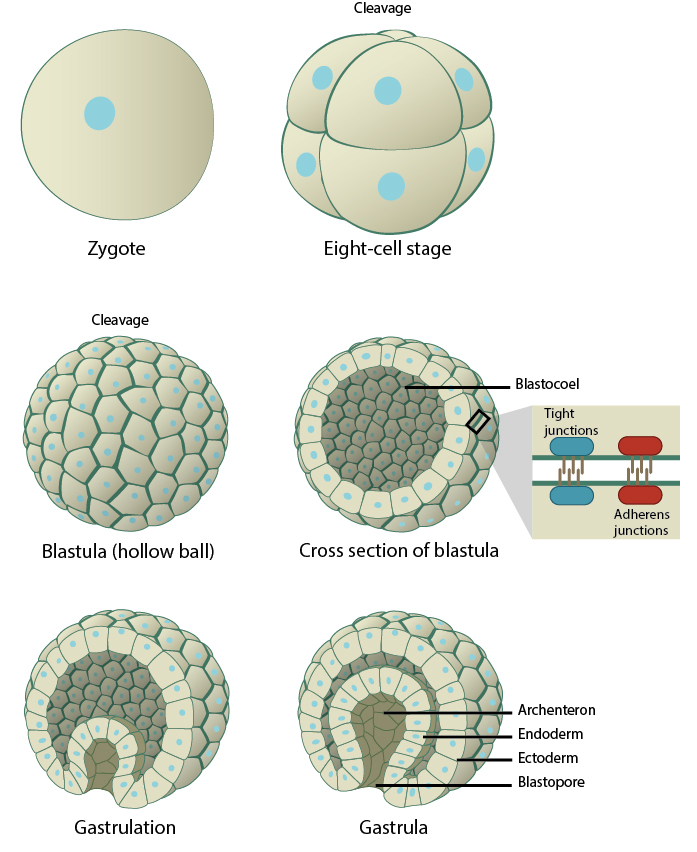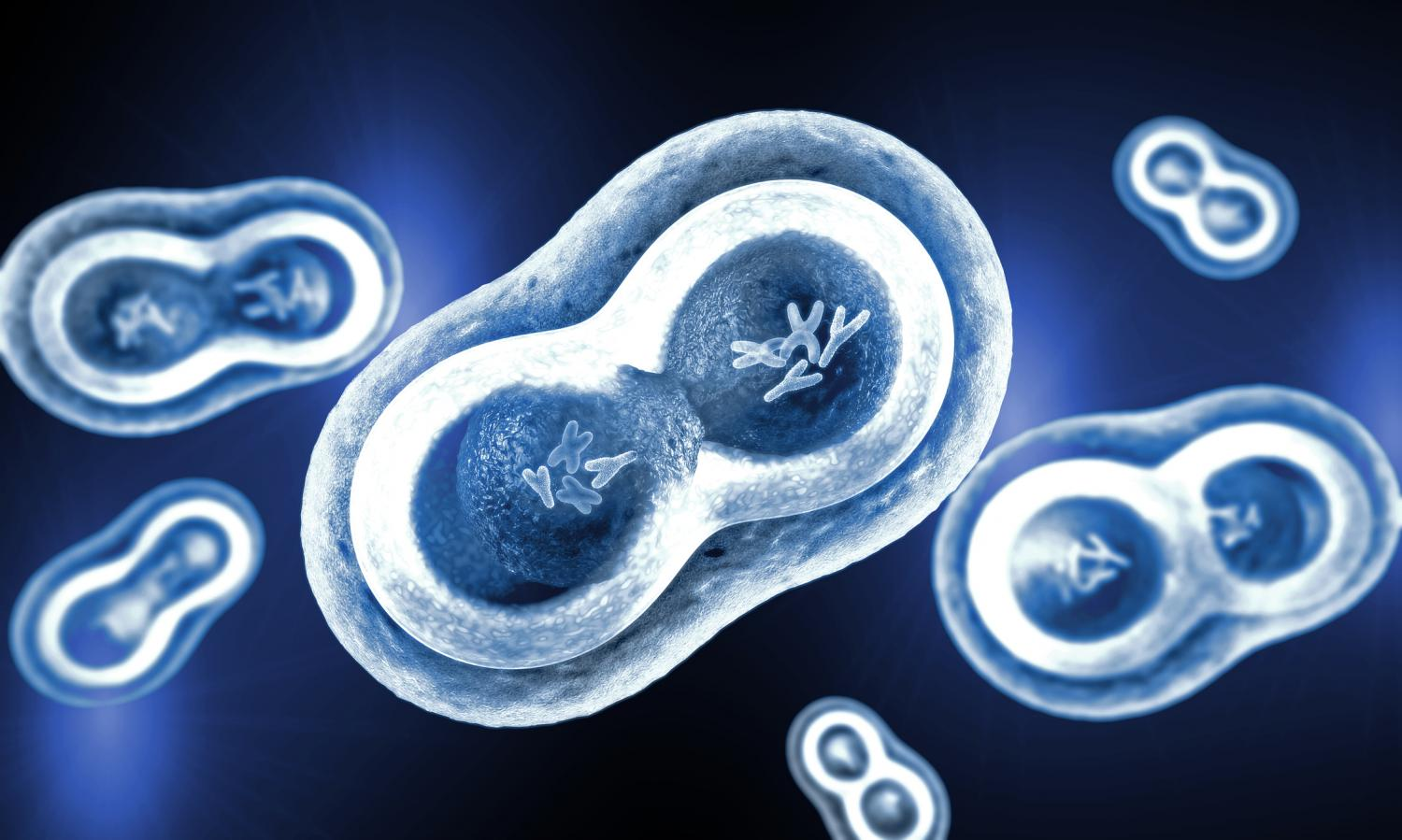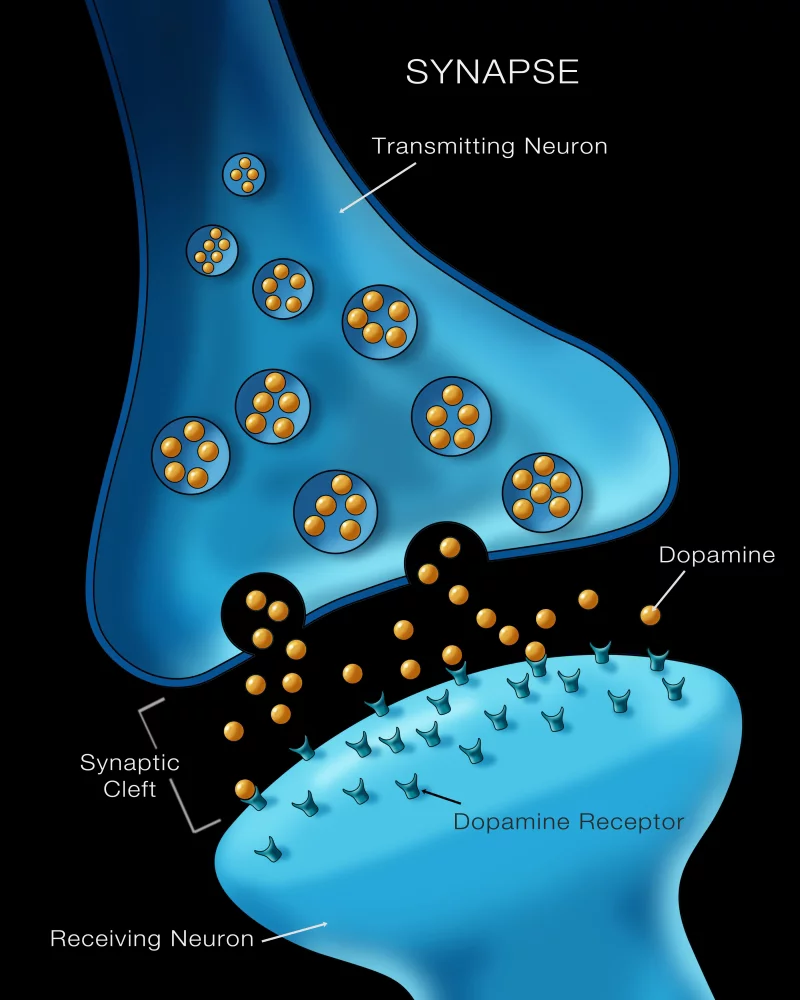Chapter 21: Development of Multicellular Organisms
Overview of Development
Development: It refers to the process by which a single-celled zygote transforms into a complex multicellular organism with specialized tissues and organs.
- Development encompasses various stages, including fertilization, embryogenesis, organogenesis, and post-embryonic growth and maturation.
- Development is regulated by a combination of genetic and environmental factors, ensuring the precise and coordinated formation of different cell types and structures.
The process of development involves cell division, cell differentiation, cell migration, and cell-cell communication.
Developmental processes are guided by signaling molecules, such as hormones and growth factors, that regulate gene expression and cellular responses.
During fertilization, the fusion of sperm and egg leads to the formation of a zygote, which contains the complete set of genetic information from both parents.
Embryogenesis: It is the stage of development in which the zygote undergoes rapid cell divisions and differentiation to form the basic body plan of the organism.
- The early embryo goes through processes like cleavage, gastrulation, and neurulation, which establish the three germ layers (ectoderm, mesoderm, and endoderm) and the rudimentary nervous system.
Organogenesis follows embryogenesis and involves the development and differentiation of specific organs and tissues from the germ layers.
- During organogenesis, cells organize into precise patterns and structures, forming organs such as the heart, lungs, brain, and limbs.
Cell differentiation plays a crucial role in development, as undifferentiated cells acquire specific functions and morphologies through the activation of specific genes.
- Differentiation is regulated by cell-intrinsic factors, such as transcription factors and epigenetic modifications, as well as by extrinsic cues from the environment and neighboring cells.

Cell migration: It is essential for shaping tissues and organs during development. Cells move in a directed manner, guided by chemical gradients and adhesive interactions.
Cell-cell communication is critical for coordinating development. Signaling pathways, including those involving growth factors, morphogens, and cell adhesion molecules, guide cell behavior and tissue organization.
Post-embryonic growth and maturation involve further cell division, tissue expansion, and remodeling to reach the final size and shape of the organism.
Developmental processes are highly conserved across different species, with fundamental molecular and cellular mechanisms shared between organisms.
Mechanism of Pattern Formation
- Pattern formation: It refers to the process by which spatially ordered structures and arrangements arise during development, resulting in the diverse patterns observed in organisms.
- Pattern formation is governed by the interplay of various cellular and molecular mechanisms that regulate cell fate, differentiation, and tissue organization.
- There are several key mechanisms that contribute to pattern formation across different organisms, including gradients, morphogen signaling, reaction-diffusion systems, cell-cell interactions, and genetic regulation.
- Gradients play a crucial role in pattern formation by providing positional information that guides cellular responses and fate determination.
- Morphogens are signaling molecules that form concentration gradients, and their distribution provides spatial cues for cells to adopt specific fates and organize into patterns.
- Morphogen signaling involves the activation or repression of target genes in a concentration-dependent manner, leading to differential gene expression and cell differentiation.
- Reaction-diffusion systems propose that the interaction between diffusible substances can generate spatial patterns through their diffusion and reaction kinetics.
- In reaction-diffusion systems, activator molecules enhance their own production while inhibitor molecules restrict the activator's spread, resulting in self-organizing patterns.
- Cell-cell interactions, including cell adhesion and signaling, are critical for pattern formation. Adhesive interactions between cells can lead to the formation of cellular aggregates and tissues with specific arrangements.
- Signaling between neighboring cells can involve juxtacrine signaling, where cell-surface molecules on one cell interact with receptors on adjacent cells, influencing their fate and positioning.
- Genetic regulation plays a central role in pattern formation by controlling the expression of specific genes at different positions and times.
- Gene regulatory networks involve the interplay of transcription factors, enhancers, and repressors, forming complex regulatory circuits that govern gene expression and cell fate decisions.
- As cells divide and differentiate, the inheritance of gene expression patterns can contribute to the maintenance and propagation of patterns during development.
- Mechanical forces and physical constraints also contribute to pattern formation by influencing cell behavior, cell shape changes, and tissue rearrangements.
- Feedback loops, both positive and negative, are common in pattern formation and help stabilize and refine the spatial organization of cells and tissues.
- Computational models, such as mathematical simulations and computer simulations, are powerful tools used to study and understand the mechanisms underlying pattern formation.
- Pattern formation is a dynamic process, with the formation and refinement of patterns occurring through interactions between cells, signaling molecules, and the environment.
Developmental Timing
- Developmental timing refers to the precise coordination and control of developmental events, ensuring that they occur in the correct sequence and at the appropriate time during an organism's development.
- Timing is critical for the formation of complex structures and the integration of different developmental processes.
- Developmental timing is regulated by a combination of genetic factors, environmental cues, and epigenetic mechanisms.
- Genetic factors play a significant role in developmental timing. Specific genes, known as "master regulators," control the timing of developmental transitions and coordinate the activation or repression of other genes involved in various developmental processes.
- These master regulators often function in gene regulatory networks and can act as switches that trigger specific developmental events.
- Environmental cues, such as temperature, light, nutrients, and social signals, can influence developmental timing by modulating gene expression or directly affecting cellular processes.
- External cues can act as triggers or modifiers, synchronizing developmental processes with the environment and ensuring adaptation to changing conditions.
- Epigenetic mechanisms, including DNA methylation, histone modifications, and non-coding RNAs, also play a role in developmental timing.
- Epigenetic marks can establish stable gene expression patterns, maintaining the timing of developmental events and ensuring their fidelity across generations.
- Hormones and signaling molecules are involved in coordinating developmental timing. Hormonal signals can act as systemic cues, transmitting information between different parts of the organism and regulating the timing of specific developmental events.
- Developmental timing is often associated with the concept of "developmental checkpoints." Checkpoints are critical stages in development where the organism assesses its readiness to proceed to the next phase.
- Checkpoints can be triggered by various factors, including cell size, cell cycle progression, nutrient availability, and environmental conditions. They ensure that developmental processes occur in a regulated and sequential manner.
- Developmental timing can vary between different species, developmental stages, and environmental contexts.
- Evolutionary changes in developmental timing can lead to phenotypic variations and contribute to the diversification of organisms.
- Disruptions in developmental timing can result in developmental abnormalities and have significant implications for organismal fitness and survival.
Morphogenesis
- Morphogenesis refers to the process by which cells and tissues organize and shape themselves to form the intricate structures and organs of an organism during development.
- It involves the spatial arrangement, differentiation, and movement of cells, leading to the emergence of complex three-dimensional structures.
- Morphogenesis is regulated by a combination of genetic and environmental factors, cellular behaviors, and signaling pathways.
- Cell division, cell differentiation, cell adhesion, cell migration, and cell signaling are key cellular processes involved in morphogenesis.
- Cell division contributes to tissue growth and expansion, increasing the number of cells and providing the material for morphogenetic events.
- Cell differentiation involves the acquisition of specific cell fates and functions, leading to the formation of distinct tissue types.
- Cell adhesion plays a crucial role in shaping tissues and organs during morphogenesis. Adhesive interactions between cells allow them to form cohesive structures and maintain their positions.
- Cell migration is essential for rearranging cells and tissues, allowing them to establish proper connections and generate complex architectures.
- Cell migration can be guided by various cues, including chemical gradients, mechanical forces, and cell-cell interactions.
- Signaling pathways regulate cellular behaviors during morphogenesis. Signaling molecules, such as growth factors and morphogens, provide positional information and instruct cells on how to behave and organize.
- Extracellular matrix (ECM) components, such as collagen and fibronectin, provide structural support and guidance for cell movement and tissue organization.
- The cytoskeleton, composed of actin filaments, microtubules, and intermediate filaments, plays a critical role in morphogenesis by providing mechanical support, generating forces, and organizing cellular structures.
- Changes in cell shape, driven by cytoskeletal rearrangements, contribute to the bending, folding, and elongation of tissues during morphogenesis.
- Apical-basal polarity and planar cell polarity are important aspects of morphogenesis. These polarities determine the orientation and alignment of cells, guiding tissue organization and organ formation.
- Morphogenetic events can include processes such as gastrulation, neurulation, organogenesis, branching, and elongation.
- Gastrulation involves the rearrangement of cells into three germ layers (ectoderm, mesoderm, and endoderm), establishing the body plan of the embryo.
- Neurulation is the process by which the neural tube is formed, giving rise to the central nervous system.
- Organogenesis involves the formation and differentiation of specific organs and tissues from germ layers, leading to the development of complex structures such as the heart, lungs, liver, and limbs.
- Branching morphogenesis occurs in various organs, including the lungs, kidneys, and blood vessels, and involves the branching and elongation of tubular structures.
- Morphogenesis is a dynamic and coordinated process that requires precise regulation and communication between cells and tissues.
Growth
Growth refers to the increase in size, mass, and complexity of an organism over time.
- It is a fundamental process in all living organisms and is essential for development, tissue repair, and adaptation to the environment.
Growth is regulated by a combination of genetic factors, nutritional availability, hormonal signals, and environmental cues.
Growth can occur in different aspects, including overall body size, organ size, cell number, cell size, and tissue remodeling.
Organisms exhibit different growth patterns depending on their life cycle, species, and environmental conditions.
Growth involves the coordinated processes of cell division, cell differentiation, cell enlargement, and extracellular matrix deposition.
- Cell division is the primary mechanism of growth, allowing for the increase in cell number and tissue expansion.
- Cell differentiation accompanies growth, as undifferentiated cells acquire specialized functions and contribute to tissue organization and complexity.
- Cell enlargement, or cell hypertrophy, involves an increase in cell size through the accumulation of cellular components and organelles.
- Extracellular matrix (ECM) plays a crucial role in growth by providing structural support, organizing tissues, and regulating cellular behavior.
Growth is regulated by genetic factors, including growth-promoting genes and growth-inhibiting genes.
Hormones, such as growth hormone, insulin-like growth factors, and thyroid hormones, play a significant role in coordinating growth processes by regulating cell division, differentiation, and metabolism.
Nutritional availability and energy balance are critical for growth. Adequate nutrient intake, including carbohydrates, proteins, lipids, vitamins, and minerals, is necessary for proper growth and development.
Environmental factors, such as temperature, light, and social interactions, can influence growth by affecting metabolism, hormone production, and nutrient availability.
Growth rates vary depending on the developmental stage. Rapid growth is typically observed during early development and adolescence, while growth slows down during adulthood.
Growth can be influenced by genetic disorders, hormonal imbalances, malnutrition, and environmental factors, leading to stunted growth or excessive growth.
Growth is often accompanied by changes in body proportions, tissue differentiation, and the development of specialized structures and organs.
Growth can be influenced by both intrinsic factors (such as genetic predisposition) and extrinsic factors (such as nutrition and environmental conditions).

Neural Development
Neural development refers to the process by which the nervous system, including the brain and spinal cord, forms and matures during embryonic and postnatal stages.
- It involves the differentiation and organization of neural stem cells, the migration of neurons to their correct positions, the establishment of neuronal connections, and the refinement of neural circuits.
Neural development is a complex and highly orchestrated process regulated by genetic programs, signaling pathways, and environmental cues.
The development of the nervous system begins with the formation of the neural tube, a structure that gives rise to the brain and spinal cord.
The neural tube forms through a process called neurulation, which involves the folding and fusion of the neural plate, a specialized region of the ectoderm.
Neural stem cells, also known as neuroblasts, give rise to the diverse cell types of the nervous system, including neurons, astrocytes, and oligodendrocytes.
- Neurogenesis, the production of new neurons, occurs in specific regions of the developing brain, such as the ventricular zone and subventricular zone.
The migration of neurons is a critical process in neural development, ensuring that neurons reach their appropriate locations to form functional circuits.
- Neurons migrate along specialized pathways, guided by various molecular cues, including cell adhesion molecules and guidance cues secreted by other cells.
- Once neurons reach their final destinations, they extend processes called axons and dendrites to establish connections with other neurons.
- Axon guidance is governed by attractive and repulsive cues that direct axons toward their target regions and repel them from inappropriate areas.
- The growth cone, located at the tip of growing axons, plays a crucial role in axon guidance, sensing environmental cues and navigating toward appropriate targets.
Synaptogenesis is the process by which synapses, the specialized junctions between neurons, are formed. It involves the precise alignment of pre- and postsynaptic elements.

Synaptic refinement occurs through a combination of activity-dependent mechanisms and synaptic pruning, ensuring the formation of functional neural circuits.
Myelination, the process of insulating axons with a myelin sheath, enhances signal transmission and promotes efficient neural communication.
Glial cells, such as astrocytes and oligodendrocytes, provide support, nourishment, and insulation to neurons during neural development.
Neural development is regulated by a variety of signaling pathways, including Wnt, Sonic Hedgehog (Shh), Notch, and Bone Morphogenetic Protein (BMP) signaling.
Genetic mutations and environmental factors can disrupt neural development, leading to neurodevelopmental disorders and neurological conditions.